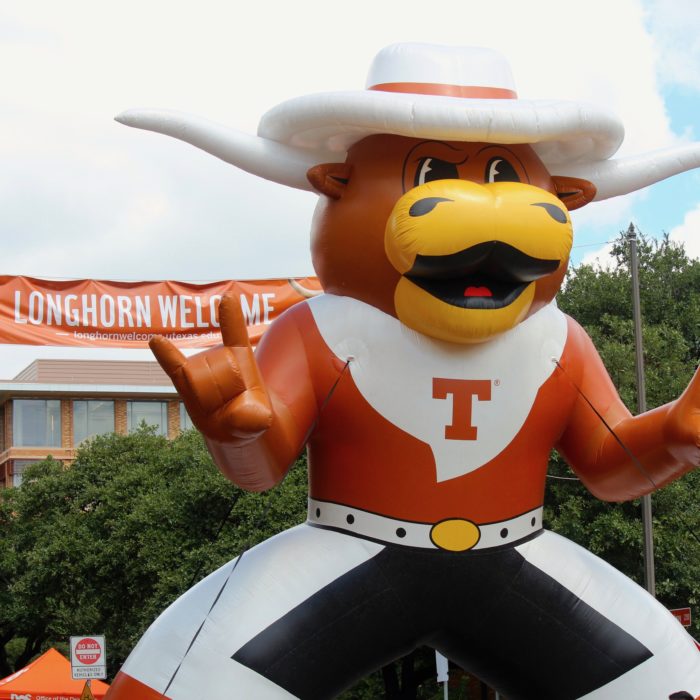
When friends or family visit, I usually focus on bringing them to the best restaurants, live music venues, and outdoor destinations I know, since to me that’s where Austin really shines. But when it comes to more traditional sightseeing activities that showcase the history of our fair city, I’m often at a loss.
Then I remember that in the middle of our city lies one of the top universities in the country, offering countless opportunities for learning and exploration.
The University of Texas at Austin is so rich in history, culture, and architecture that you could easily spend a whole day wandering around the campus nicknamed the Forty Acres (today it’s 431 acres).
Whether you are showing visitors around or just want to learn more about all the university has to offer, here is a suggested walking tour of some of my favorite spots on campus, from the most well-known landmarks to some hidden gems.
Before you begin: Parking and Navigation
Parking at UT Austin isn’t easy or cheap. Your best bet is to park in a university parking garage; rates start at $3 for half an hour and go up to $18 for 8+ hours. For this walking tour, I recommend parking at the Guadalupe Garage (1616 Guadalupe St.) or the Brazos Garage (210 E. MLK Blvd.).
To find your way around the university, visit maps.utexas.edu on your phone to see a detailed campus map.
1. Formal UT Austin entrance
This new, formal entrance to the university was created in 2016, and it really gives you a grand welcome. It also makes for a beautiful photo op with the Tower in the background. The entrance is on the south side of campus, at the intersection of W. MLK Blvd. and University Ave.
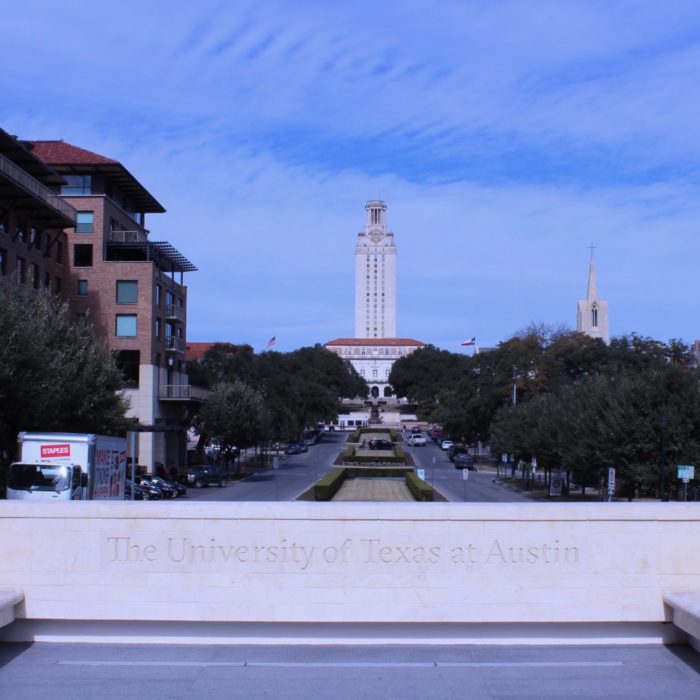
2. Blanton Museum
If you have some time, your next stop should be the Blanton Museum, one of the largest university art museums in the U.S. There are temporary exhibitions that come through every year, so there’s always something new to see. You can’t miss Ellsworth Kelly’s Austin, part of the permanent collection. It’s the chapel-like building with the rainbow of stained-glass windows located outside the museum. (Entry is included with museum admission).
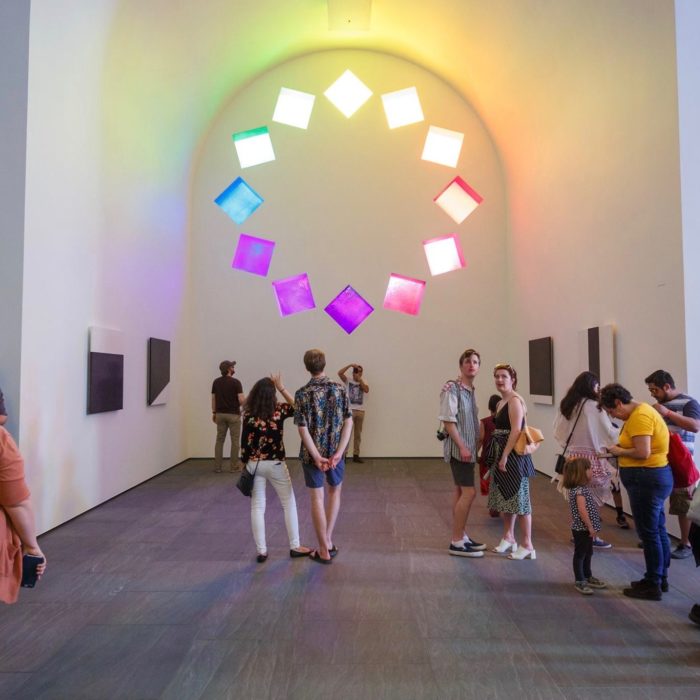
3. Littlefield Fountain/South Mall
At the entrance to the South Mall is the Littlefield Fountain, another iconic photo op. The fountain is actually a World War I monument that was completed in 1933. The South Mall is the main quad for the campus, and it’s a nice grassy, scenic spot to take a rest. The “Six Pack” are the six red-roofed buildings on each side of the mall, built between 1940 and 1970.
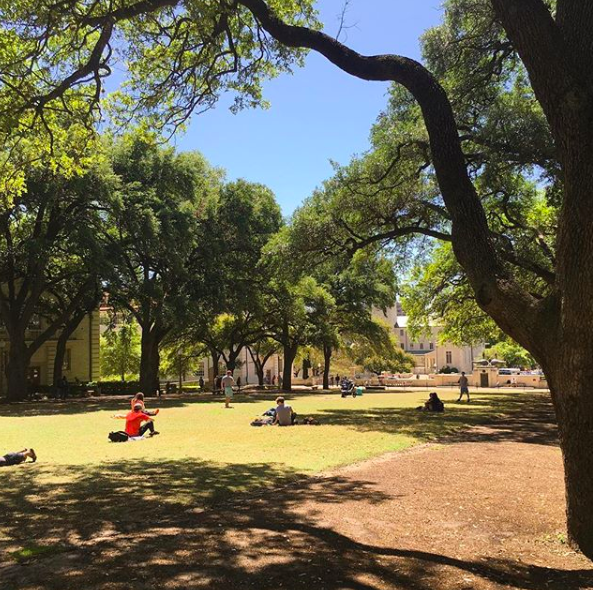
4. Harry Ransom Center
Again, if you have some time, the Harry Ransom Center is a must-visit. Among the millions of manuscripts, rare books, photographs, and works of art, you’ll find a Gutenberg Bible, the oldest camera photograph, a rare first edition of Alice’s Adventures in Wonderland, and Edgar Allen Poe’s writing desk.
5. Goldsmith Hall and Battle Hall
The School of Architecture is housed in Goldsmith Hall, and it’s worth taking a quick detour to see the Living Wall on the northwest corner of the building. It’s a 10×25 foot honeycomb structure with 148 soil containers holding a variety of native plants.
Next door in Battle Hall, take a peek into the gorgeous Architecture and Planning Library.
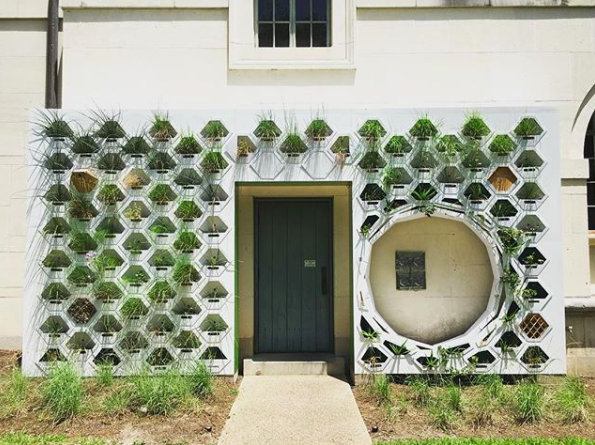
6. The Tower
After Goldsmith Hall, make your way back through the West Mall (past the Cesar Chavez statue) to the Main Mall and you’ll be in front of the iconic Tower, also known as the Main Building. Standing 307 feet tall, it was built in 1937 to house the university’s central library, but today it mostly houses administrative offices. The Life Sciences Library is there—be sure to check out its grand reading rooms. You can make a reservation for a public tour of the Tower at universityunions.utexas.edu/food-fun/tower-tours.
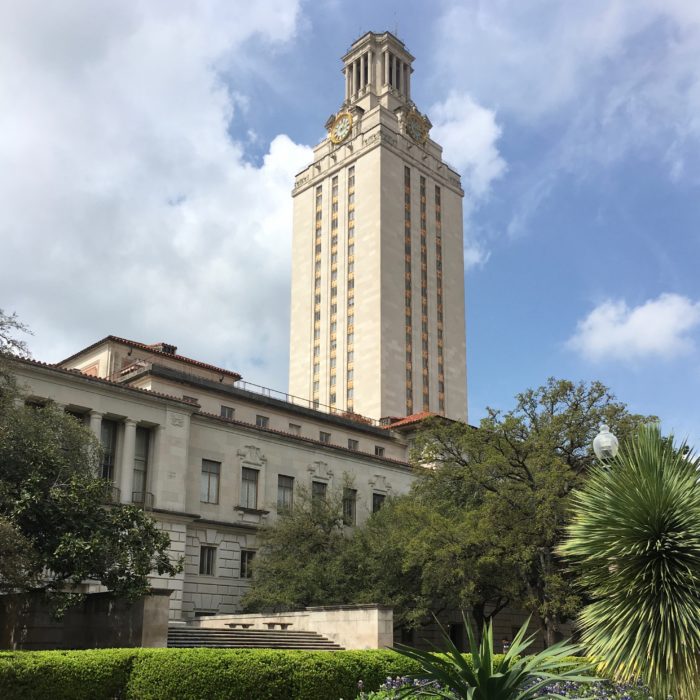
7. The Texas Union
On your way to the Union you’ll pass by the Flawn Academic Center and see the Torch Bearers sculpture by Charles Umlauf, which represents the passing of knowledge from teacher to student. The Union was built in 1933 to serve as a “living room” for students. In the 1960’s, it was the scene of public debate and anti-war protests. Today it’s a place to study, meet, eat, and have fun. There’s even an underground bowling alley that’s open to the public.
Stop by the Cactus Cafe in the Union, an intimate live music venue and bar with a storied history and national reputation.
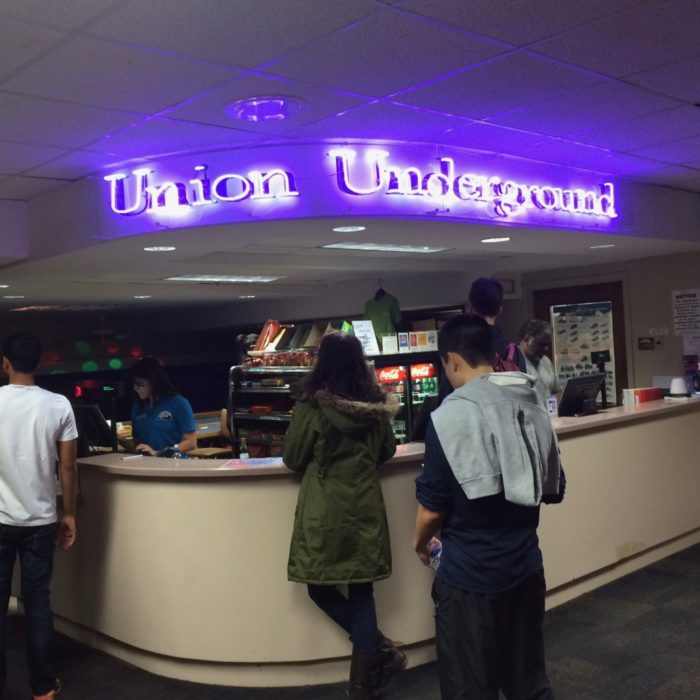
8. The Turtle Pond
Say hello the turtles in the Turtle Pond, which has been around since 1939 and is home to a few dozen turtles of multiple species. It’s also a learning resource for biology students, who observe the turtles and their habitat.

9. The Battle Oaks
The three Texas live oaks known as the Battle Oaks are a beautiful and peaceful landmark. The trees are 250-300 years old and were on campus when it opened in 1883. They surround the statue of civil rights leader Barbara Jordan.
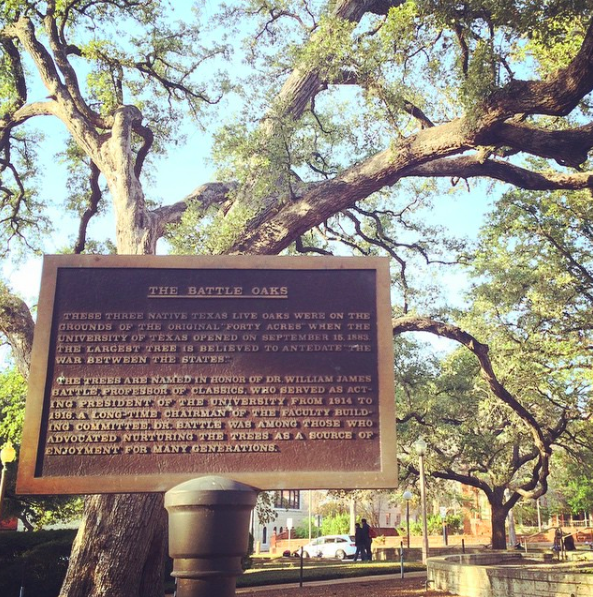
10. The Littlefield Home
Cross 24th Street and you’ll see the Littlefield Home, built in 1894. It’s one of the few remaining Victorian mansions in the area. Outside the house is a unique Himalayan Cedar tree, which was brought from Tibet to Austin. If you’re into spooky stuff, ghost sightings have been reported and some say it is haunted by Alice Littlefield, whose husband George commissioned the house.

11. Landmarks Public Art
The Landmarks program presents more than 40 pieces of public artwork all over the UT campus. Right by the Littlefield Home is the Gordon-White Building; inside you’ll find a Landmarks piece called “(Forever Free) Ideas, Languages and Conversations,” which is made of hundreds of wooden crutches.
Continue walking on 24th Street and you’ll see one of my favorite pieces towering above you at the intersection of 24th and Speedway: “Monochrome for Austin” by Nancy Rubins. Incorporating around 70 aluminum canoes and small boats, it’s so unexpected and cool.
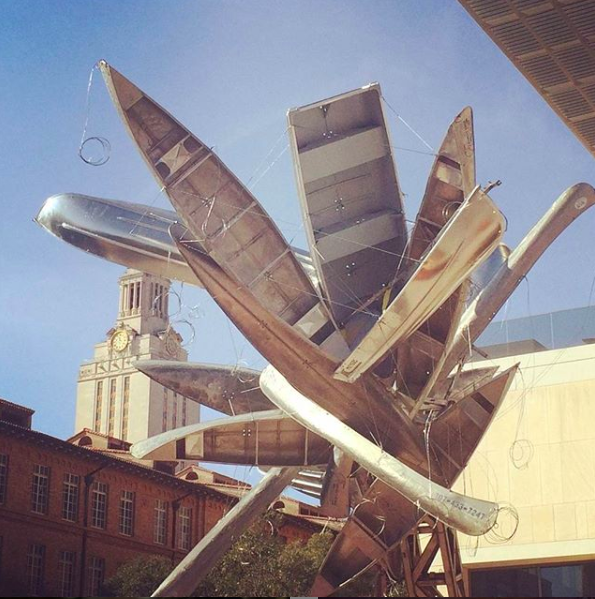
12. East Mall/Student Activity Center
From 24th Street, take a right on Speedway and walk until you get to the East Mall, where you’ll find the bronze statue of Martin Luther King, Jr., erected in 1999. Then you can pop into the Student Activity Center, a beautiful building completed in 2011 dedicated to student life.
On the rooftop of the Student Activity Center is another favorite Landmark piece, “The Color Inside” by James Turrell. It’s hard to describe—you have to see it in person—but it’s a permanent structure with an oculus (called a Skyspace) where you can experience the changing colors of the sky. The best time to view the installation is at sunset, and you can make a reservation for your visit here: turrell.utexas.edu
13. The Carillon Restaurant
By this point you’re probably exhausted and could use a good meal. Near the formal entrance where you began is The Carillon restaurant, a high-end spot serving delicious American fare. They have a pretty good happy hour from 5-7 p.m. Make a reservation at thecarillonrestaurant.com.
There’s a lot more to see that’s not listed here, including the LBJ Presidential Library, Bass Concert Hall, and the Texas Memorial Museum. You can also take a tour of DKR Memorial Stadium, but they have been temporarily suspended due to construction.
So start planning your next visit now,
and hook ‘em!
